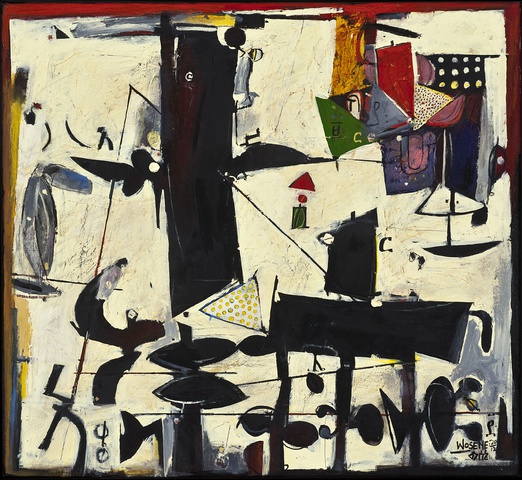Continuing with its aim to provide a platform for a global discussion on contemporary African art, 1:54 is impressive in its variety, size and scope. This year, 1:54 spans from younger artists like Nidhal Chamekh and Modupeola Fadugba to legends such as Gordon Parks or late photographer Malick Sadibé, who is the star of a special solo show on the occasion of the fair; his first major UK retrospective.
As the world’s leading galleries specializing in African Art are brought together in London, it is inevitable to think of historical and political significance of the works on display beyond their mere commercial value. The history of civil rights, the persecution of black albinos, the discrimination against African and African Americans that still persists to this day as well as a critique of the blatant whiteness of the art market are issues that artists, their galleries and the fair seem to want to put forward. “We believe in these artists and in their work and that’s what matters to us.” says Mesai Haileleulof from Addis Contemporary, a “brand new” Ethiopian gallery based in Addis Ababa, which started business in 2013.
Supporting both emerging and established artists — notably Wosene Worke Kosrof, whose work is housed in some of the world’s leading institutions, including Washington’s Smithsonian — the gallery has done well for itself in the last couple of years, managing to get a booth at the 2016 Armory Show. Despite its success, Haileleulof laments the necessity of having an all-African art fair. “I’m not going to lie, I wish there was no need for an exclusively African art fair. Even at the Armory Show, we had a special section dedicated to us (African Art). Slowly but surely, however, I believe a positive shift will take place.”
Not everybody agrees with Haileleulof and galleries such as Officine dell’Immagine (Milan, Italy) who do exclusively specialize in African Art, find the fair’s format an ideal opportunity to participate in such a thematic event. Tunisian Gallery Selma Feriani — with stunning serigraphs prints by Nidhal Chamekh and Hicham Benouhoud — believes that a focus on African artists opens up possibilities for galleries, introducing both European and African collectors to the game, all in one place. Despite attending the last editions of Art Basel and Art Basel Hong Kong, Frieze is sadly not the ideal place to showcase African art a representative from Feriani confessed.

October Gallery, with works by Romuald Hazoumè, among others, at quasi-affordable prices, is also present, as one of London’s first galleries to bring African art to the city 35 years ago. Photo works start at £2,000 to £3,500 whilst a series of masks are priced at £13,500.
As Frieze seems to have escaped any negative impact from the aftereffects of Brexit, galleries at 1:54 are also seeing their businesses succeeding. Nigerian Art Twenty One have seen editions of Zulu Kids by Namsa Leuba sell incredibly well. Good news for a gallery based in the centre of a suffering market.

With very good attendance and a pretty diverse audience, 1:54 attracts collectors from both Africa and Europe, but more importantly creates a vital space for African Art and its market to blossom. As of today, the kind of initiative the fair promotes is still desperately needed, as the world’s biggest fairs remain predominantly white.
A beautiful setting, high-quality art and an important lesson in the history of global culture make 1:54 not merely a welcome alternative to Frieze, but a key destination for both collectors and art enthusiasts.
photos: Wosene Worke Kosrof, 'Play of the Poet', 2012, Acrylic on canvas, 56 x 61 cm, Courtesy of Addis Fine Art / Romuald Hazoumè, 'Tchigan', 2015, Found objects, 28 x 27 x 20 cm, Courtesy of the artist and October Gallery









